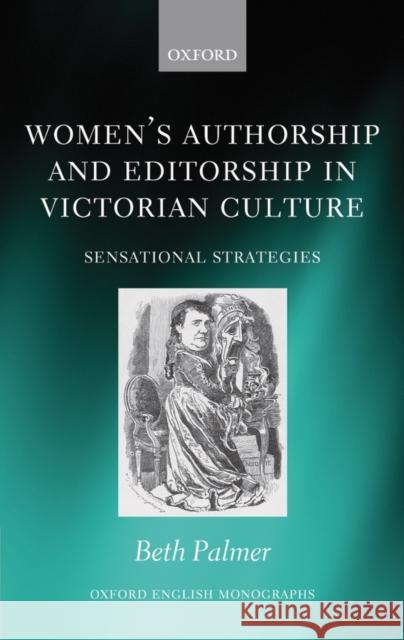Women's Authorship and Editorship in Victorian Culture: Sensational Strategies » książka
Women's Authorship and Editorship in Victorian Culture: Sensational Strategies
ISBN-13: 9780199599110 / Angielski / Twarda / 2011 / 256 str.
This book considers the ways in which women writers used the powerful positions of author and editor to perform conventions of gender and genre in the Victorian period. It examines Mary Elizabeth Braddon, Ellen Wood, and Florence Marryat's magazines (Belgravia, Argosy, and London Society respectively) alongside their sensation fiction to explore the mutually influential strategies of authorship and editorship.
The relationship between sensation's success as a popular fiction genre and its serialisation in the periodical press was not just reciprocal but also self-conscious and performative. Publishing sensation in Victorian magazines offered women writers a set of discursive strategies that they could transfer onto other cultural discourses and performances. With these strategies they could explore, enact, and re-work contemporary notions of female agency and autonomy, as well as negotiate contemporary criticism. Combining authorship and editorship gave these middle-class women exceptional control over the shaping of fiction, its production, and its dissemination.
By paying attention to the ways in which the sensation genre is rooted in the press network this book offers a new, broader context for the phenomenal success of works like Mary Elizabeth Braddon's Lady Audley's Secret and Ellen Wood's East Lynne. The book reaches back to the mid-nineteenth century to explore the press conditions initiated by figures like Charles Dickens and Mrs Beeton that facilitated the later success of these sensation writers. By looking forwards to the New Woman writers of the 1890s the book draws conclusions regarding the legacies of sensational author-editorship in the Victorian press and beyond.











